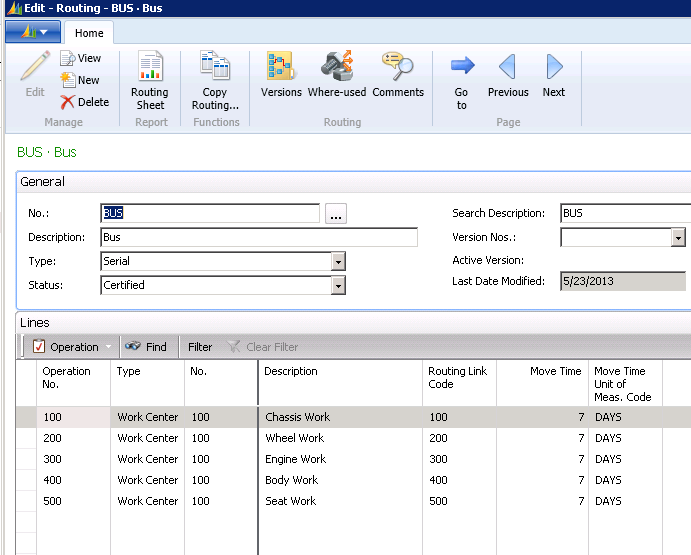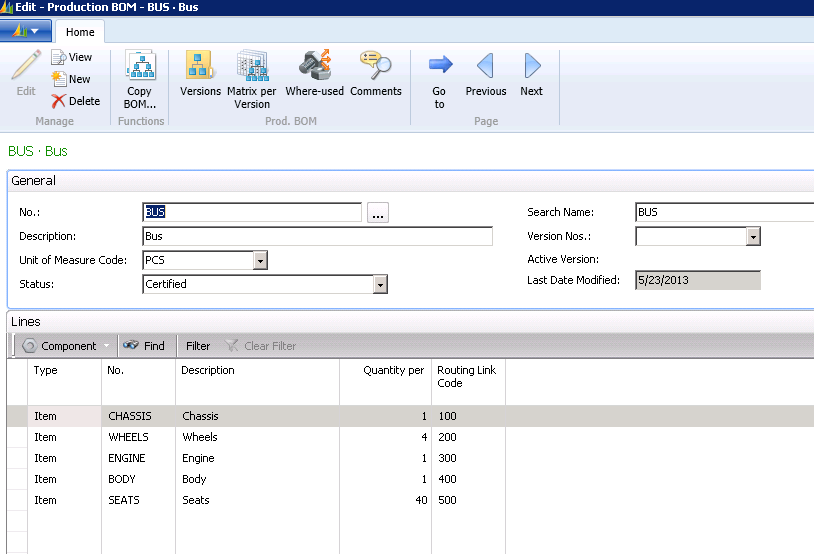Using Routing Link Codes in MRP Planning in Microsoft Dynamics NAV

In a production environment where the production cycle is long (greater than one week) and you want to schedule in component material on a just in time basis, you can use Routing Link Codes in Dynamics NAV.
Routing Link Codes are used to make an association between a routing operation step and the BOM components that will be used in the operation.
I have set up a simple example in Dynamics NAV 2013 to demonstrate how this feature can work. In this example, my busses are in production for five weeks and are in each work center for a week. I want my component material to be scheduled in just in time to start production in each work center.
I set up a routing with five operation steps to produce the bus. For each operation step, I added a Routing Link Code:
Figure 1: Routing setup for five operation steps to produce the bus – each operation step has a Routing Link Code
I then set up a Bill of Material for the bus components that also have Routing Link Codes to make the relationship between the routing and the components used in that operation step.
Figure 2: Bill of Materials for the bus components – the components also have Routing Link Codes
When I ran the MRP process (Calculate Regenerative Plan in the Dynamics NAV Planning Worksheet), I could see that the system accurately calculated the need date for each component based on the start date of each operational step.
Figure 3: Planning worksheet shows the date each component is needed based on the start date of each operational step
While my example is a simple one, it demonstrates that Routing Link Codes in Dynamics NAV may be a valuable tool in your procurement planning process. If you have questions about Routing Link Codes or your procurement planning, please contact ArcherPoint.



